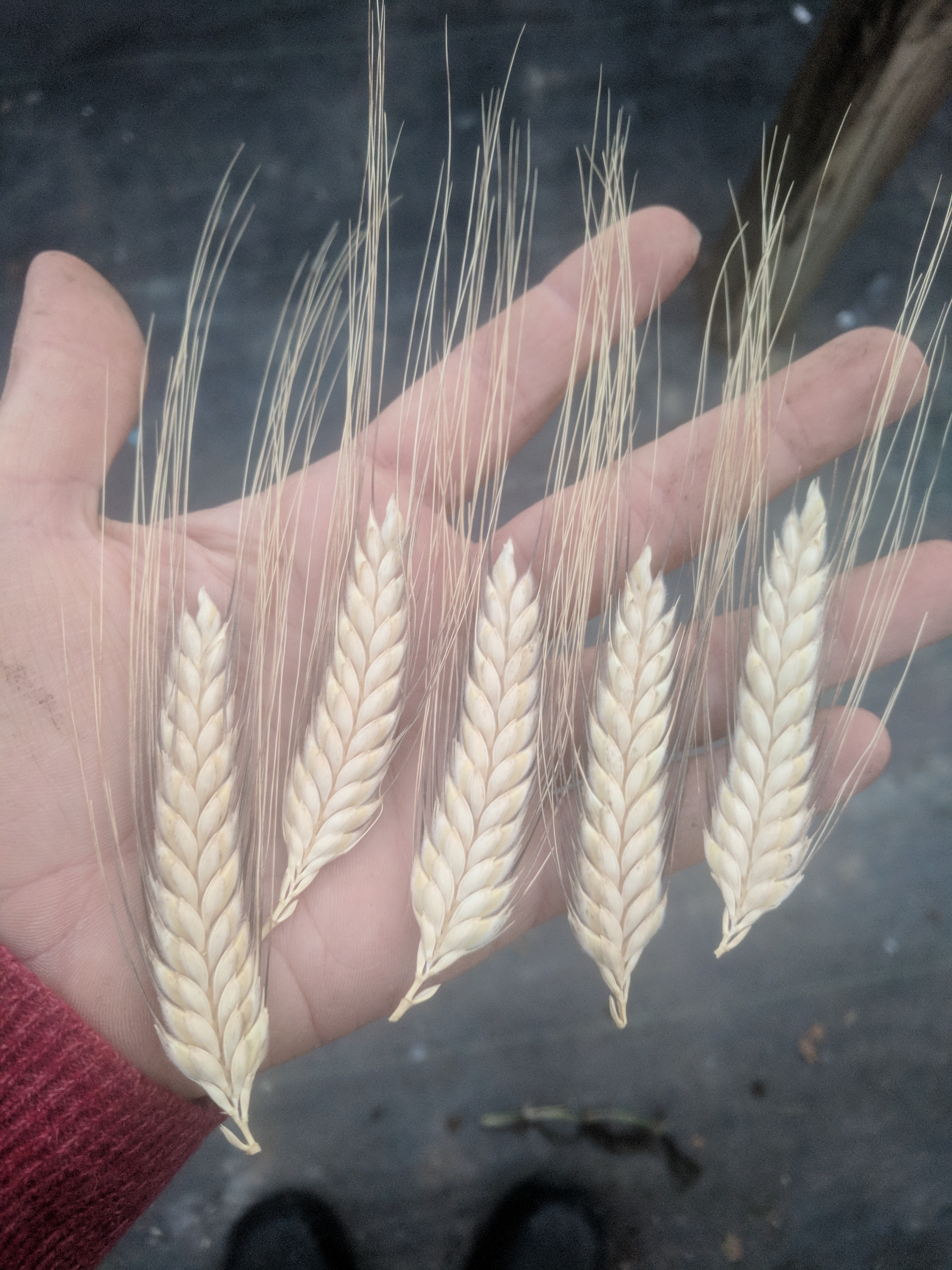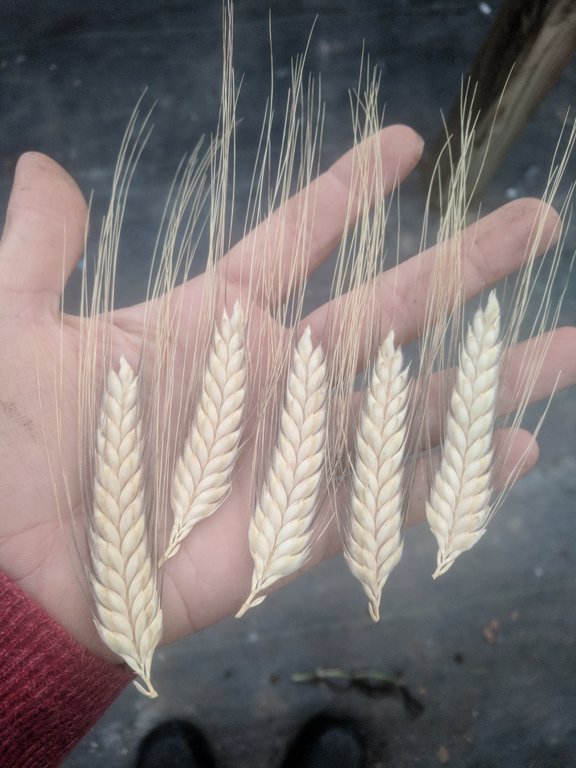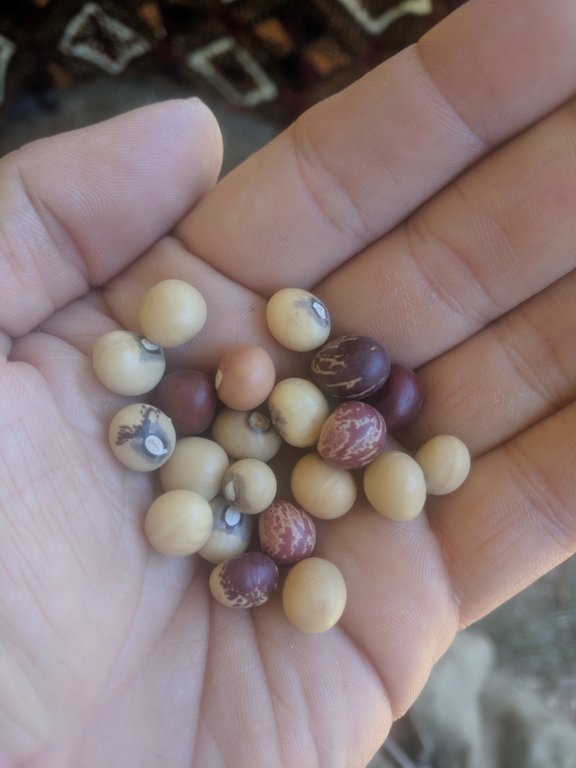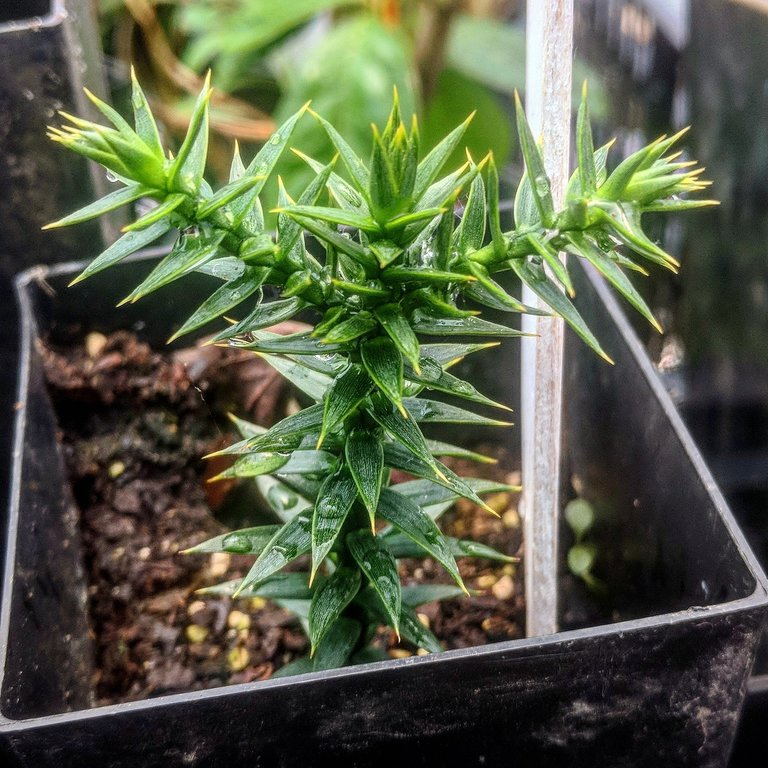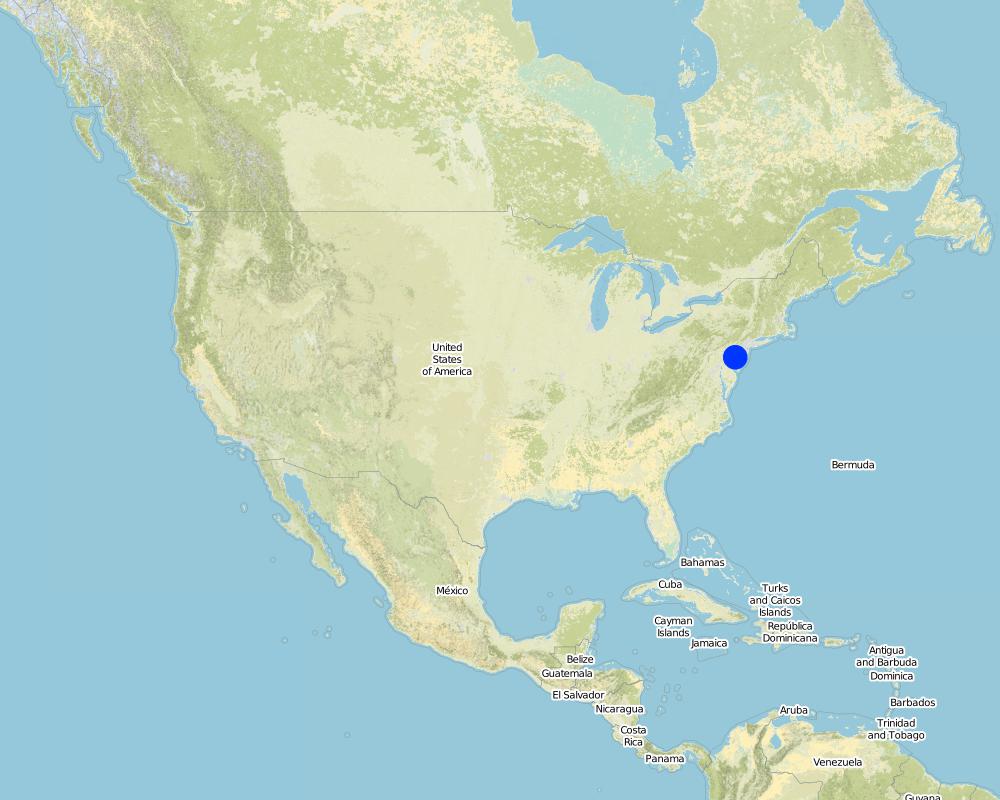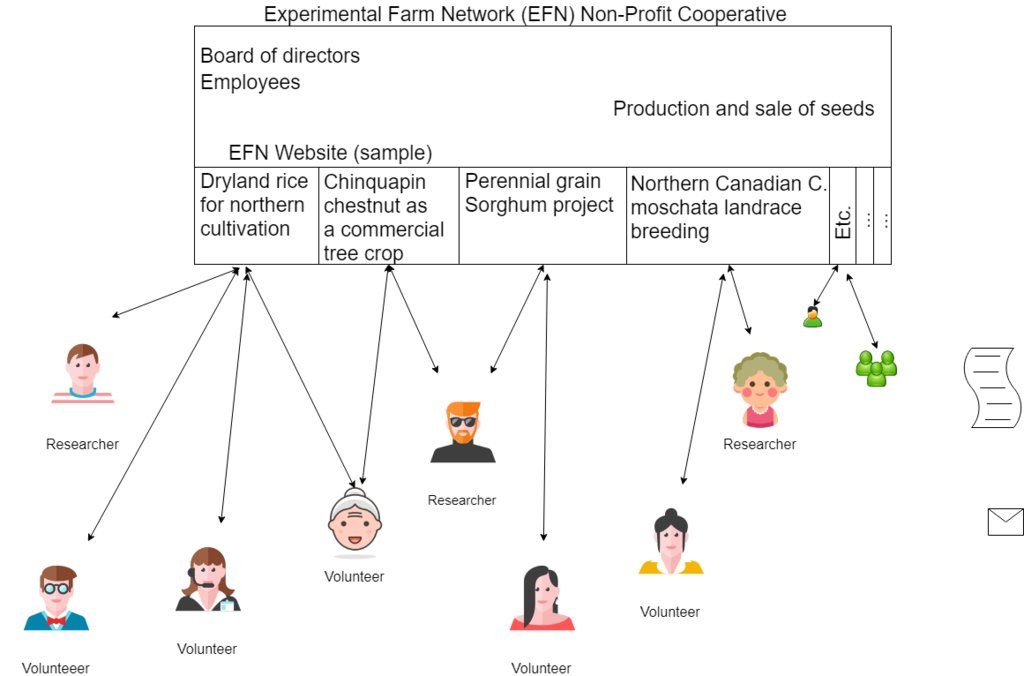Experimental Farm Network for collaborative plant breeding and sustainable agriculture research. [Etats-Unis]
- Création :
- Mise à jour :
- Compilateur : Stefan Graf
- Rédacteur : –
- Examinateur : Alexandra Gavilano
approaches_4199 - Etats-Unis
Voir les sections
Développer tout Réduire tout1. Informations générales
1.2 Coordonnées des personnes-ressources et des institutions impliquées dans l'évaluation et la documentation de l'Approche
Personne(s) ressource(s) clé(s)
exploitant des terres:
Kleinman Nate
nathankleinman@gmail.com / https://www.experimentalfarmnetwork.org/
Experimental Farm Network
Etats-Unis
Nom du ou des institutions qui ont facilité la documentation/ l'évaluation de l'Approche (si pertinent)
Bern University of Applied Sciences, School of Agricultural, Forest and Food Sciences (HAFL) - Suisse1.3 Conditions relatives à l'utilisation par WOCAT des données documentées
Quand les données ont-elles été compilées (sur le terrain)?
09/11/2018
Le compilateur et la(les) personne(s) ressource(s) acceptent les conditions relatives à l'utilisation par WOCAT des données documentées:
Oui
2. Description de l'Approche de GDT
2.1 Courte description de l'Approche
The Experimental Farm Network is an online platform facilitating collaborative plant breeding as well as other sustainable agricultural research.
2.2 Description détaillée de l'Approche
Description détaillée de l'Approche:
The experimental farm network started when Nate Kleinman and Dusty Hinz saw the threats of climate change, and wanted to have an agriculture able to cope with it. Breeding for crops like trees, or perennial wheat, takes decades and is often part of university programs which phase out with the retirement of the responsible person. These are the reasons which lead the two to build up a decentralized network for plant breeding and other experimental farming techniques.
The network is online based, open source, and with a free access to everyone having an internet connection. In the network, there are two positions for each project: researcher and volunteer. A researcher who wants to start a project describes the goals, the needs from the volunteers, and the required climatic and soil conditions. A volunteer, who has a profile where the growing conditions are described, can sign up for the project. The researcher can then contact the volunteers which seem suitable, and send genetic material. Usually, the work involves planting the seeds, growing it out, measuring some characteristics (size, yield, etc.) and sending a part of the seeds with some data back.
The EFN is organized as a non-profit cooperative with two permanent employees and a board of advisors. The sources of income were initially a crowdsourcing and the sale of seeds. Financially it is not yet totally self-carrying, as the employees are working sometimes for free. With the increase of seed sales, also from experimental and diverse varieties, it is changing.
The website helps putting people in touch and keeping records of who is working on which project, as well as for volunteers to stay updated with the projects. Some projects, with annuals, are only short term, while others, for example with slow growing perennials, may need decades if not more to produce a selected cultivar or variety of a crop.
2.3 Photos de l'approche
2.5 Pays/ région/ lieux où l'Approche a été appliquée
Pays:
Etats-Unis
Autres spécifications du lieu :
This is where the non-profit cooperative is registered. Projects take place around the world, in the USA, Canada and Australia so far.
Commentaires:
The Network is global, with members in the USA, Australia as of 2018. Shown is Philadelphia, where the non-profit cooperative is registered.
Map
×2.6 Dates de début et de fin de l'Approche
Indiquez l'année de démarrage:
2013
Si l'année précise est inconnue, indiquez approximativement quand l'Approche a démarré:
il y a moins de 10 ans (récemment)
2.7 Type d'Approche
- initiative/ innovation récente locale
2.8 Principaux objectifs de l'Approche
Develop farming systems for a future, while tackling problems with climate change.
2.9 Conditions favorisant ou entravant la mise en œuvre de la(des) Technologie(s) appliquée(s) sous l'Approche
normes et valeurs sociales/ culturelles/ religieuses
- favorise
More and more people are aware of the problems with the narrow genetics of current varieties.
collaboration/ coordination des acteurs
- favorise
It only works as collaborative projects.
- entrave
Some volunteers do not return seeds, it is difficult to get reliable people.
connaissances sur la GDT, accès aux supports techniques
- favorise
The exchange of the different actors in plant breeding and sustainable farming enables the work of the experimental farm network
charge de travail, disponibilité de la main-d'œuvre
- favorise
Many breeding projects can only be done on huge areas, for example tree breeding. Spreading the workload on many people, all of them having only a limited work, enables to make
3. Participation et rôles des parties prenantes impliquées dans l'Approche
3.1 Parties prenantes impliquées dans l'Approche et rôles
- exploitants locaux des terres / communautés locales
Volunteers
Volunteers help researchers with their experiments, for example by looking out for promising wild specimen, by growing out varieties under specific conditions to assess the resistance, by selecting experimental varieties, or by similar work.
- organisations communautaires
The non-profit cooperative "Experimental Farm Network"
Provides an online platform where researchers and volunteers can meet.
- chercheurs
Researchers
They can find volunteers if more people are needed to carry out an experiment, specially in plant breeding for sustainable farming.
Si plusieurs parties prenantes sont impliquées, indiquez l'organisme chef de file ou l'institution responsable:
The non-profit cooperative "Experimental Farm Network" has the lead, but each researcher leads his or her own project.
3.2 Participation des exploitants locaux des terres/ communautés locales aux différentes phases de l'Approche
| Participation des exploitants locaux des terres/ communautés locales | Spécifiez qui était impliqué et décrivez les activités | |
|---|---|---|
| initiation/ motivation | auto-mobilisation | |
| planification | interactive | |
| mise en œuvre | interactive | |
| suivi/ évaluation | aucun |
3.3 Diagramme/ organigramme (si disponible)
Description:
The Experimental Farm Network is organised as a Non-Profit Cooperative. It consists of a board of directors overseeing the the whole, and of employees. The EFN lives from donations and from the sale of seeds which are cultivated on kindly lent land.
The EFN has a website, experimentalfarmnetwork.org, on which researchers can create an account describe projects for which they want volunteers. Volunteers can also creat an account, on which they describe their soil and climatic conditions. Researchers can then contact volunteers and ask them for help. The work for the volunteer often involves growing recieved seeds and send back records about the growth, and send back seeds to the researcher. The volunteers and researcher can connect trough the website, but some work as well trough other networks like facebook.
Auteur:
Stefan Graf
3.4 Prises de décision pour la sélection de la Technologie/ des Technologies
Indiquez qui a décidé de la sélection de la Technologie/ des Technologies à mettre en œuvre:
- principalement les exploitants des terres soutenus par des spécialistes de la GDT
Expliquez:
Each volunteer grows a crop only if he or she wants to grow it, and gets support for it.
Spécifiez sur quelle base ont été prises les décisions:
- l'évaluation de connaissances bien documentées en matière de GDT (prises de décision fondées sur des preuves tangibles)?
- les résultats de recherches?
- expériences et opinions personnelles (non documentées)
4. Soutien technique, renforcement des capacités et gestion des connaissances
4.1 Renforcement des capacités/ formation
Une formation a-t-elle été dispensée aux exploitants des terres/ autres parties prenantes?
Oui
Spécifiez qui a été formé:
- exploitants des terres
Formats de la formation:
- Support for the volunteers
Thèmes abordés:
Depending on the crop grown, the researcher helps with information about how best to grow it.
4.2 Service de conseils
Les exploitants des terres ont-ils accès à un service de conseils?
Non
4.3 Renforcement des institutions (développement organisationnel)
Des institutions ont elles été mises en place ou renforcées par le biais de l'Approche?
- oui, modérément
- Online
Décrivez l'institution, ses rôles et responsabilités, ses membres, etc.
The online network was established within the approach.
4.4 Suivi et évaluation
Le suivi et l'évaluation font ils partie de l'Approche? :
Non
4.5 Recherche
La recherche a-t-elle fait partie intégrante de l’Approche?
Oui
Spécifiez les thèmes:
- écologie
Donnez plus de détails et indiquez qui a mené ces recherches:
Breeding is always research for better adapted crops or varieties.
5. Financement et soutien matériel externe
5.1 Budget annuel de la composante GDT de l'Approche
Indiquez le budget annuel de la composante GDT de l'Approche en $ US:
10000,00
Commentez (par ex. principales sources de financement/ principaux bailleurs de fonds):
Crowdsourcing was used in the beginning, now the sale of seeds is taking over in supporting the cooperative financially.
5.2 Soutiens financiers/ matériels fournis aux exploitants des terres
Les exploitants des terres ont-ils reçu un soutien financier/ matériel pour la mise en œuvre de la Technologie/ des Technologies?
Non
5.3 Subventions pour des intrants spécifiques (incluant la main d'œuvre)
- intrants agricoles
| Spécifiez les intrants subventionnés | Dans quelle mesure | Spécifiez les subventions |
|---|---|---|
| semences | en partie financé | Depending on the project, seeds are given and a return of the subsequent generation asked. |
Si la main d'œuvre fournie par les exploitants des terres était un intrant substantiel, elle était:
- volontaire
5.4 Crédits
Des crédits ont-ils été alloués à travers l'Approche pour les activités de GDT?
Non
5.5 Autres incitations ou instruments
D'autres incitations ou instruments ont-ils été utilisés pour promouvoir la mise en œuvre des Technologies de GDT?
Non
6. Analyses d'impact et conclusions
6.1 Impacts de l'Approche
Est-ce que l'Approche a autonomisé les exploitants locaux des terres, amélioré la participation des parties prenantes?
- Non
- Oui, un peu
- Oui, modérément
- Oui, beaucoup
Est-ce que l'Approche a aidé les exploitants des terres à mettre en œuvre et entretenir les Technologies de GDT?
- Non
- Oui, un peu
- Oui, modérément
- Oui, beaucoup
Est-ce que l'Approche a construit/ renforcé les institutions, la collaboration entre parties prenantes?
- Non
- Oui, un peu
- Oui, modérément
- Oui, beaucoup
Est-ce que l'Approche a amélioré la capacité des exploitants des terres à s'adapter aux changements/ extrêmes climatiques et a atténué les catastrophes liées au climat?
- Non
- Oui, un peu
- Oui, modérément
- Oui, beaucoup
6.2 Principale motivation des exploitants des terres pour mettre en œuvre la GDT
- conscience environnementale
- améliorer les connaissances et compétences en GDT
6.3 Durabilité des activités de l'Approche
Les exploitants des terres peuvent-ils poursuivre ce qui a été mis en œuvre par le biais de l'Approche (sans soutien extérieur)?
- incertain
Si non ou incertain, spécifiez et commentez:
It depends on the project, but usually the land users can continue to grow the crops they are testing as a part of the network.
6.4 Points forts/ avantages de l'Approche
| Points forts/ avantages/ possibilités du point de vue de l'exploitant des terres |
|---|
| Allows farmers who are isolated on the countryside to have research projects together with others. |
| Allows a decentralized approach, in which the research can continue even if the initial researcher did not continue. |
| Points forts/ avantages/ possibilités du point de vue du compilateur ou d'une autre personne ressource clé |
|---|
| The transparency allows other projects to be inspired to do similar breeding projects. |
6.5 Faiblesses/ inconvénients de l'Approche et moyens de les surmonter
| Faiblesses/ inconvénients/ risques du point de vue de l’exploitant des terres | Comment peuvent-ils être surmontés? |
|---|---|
| Some volunteers only take the seeds, and do not give back as promised. | EFN wants to implement a rating system for volunteers, in a way that researchers can see if they are reliable. |
| Some people do not want to create an account in another social network. | They can contact some researchers directly, and work without having an account. This requires more organisational work for the researchers, but is done by some. |
| Faiblesses/ inconvénients/ risques du point de vue du compilateur ou d'une autre personne ressource clé | Comment peuvent-ils être surmontés? |
|---|---|
| As an english speaking platform, it crosses many countries, while some seed regulation do not allow imports or translocations of genetic material due to the risks of disease transfer. | Arrange the platform into countries where adequate. |
7. Références et liens
7.1 Méthodes/ sources d'information
- interviews/entretiens avec les exploitants des terres
- interviews/ entretiens avec les spécialistes/ experts de GDT
- compilation à partir de rapports et d'autres documents existants
Reading trough the website.
7.2 Références des publications disponibles
Titre, auteur, année, ISBN:
Plant Breeding and Farmer Participation, Ceccarelli et al., 2009,ISBN 978-92-5-106382-8
Disponible à partir d'où? Coût?
http://www.fao.org/docrep/012/i1070e/i1070e00.htm
7.3 Liens vers les informations pertinentes disponibles en ligne
Titre/ description:
Experimental Farm Network website.
URL:
https://www.experimentalfarmnetwork.org/
Liens et modules
Développer tout Réduire toutLiens
Aucun lien
Modules
Aucun module trouvé


